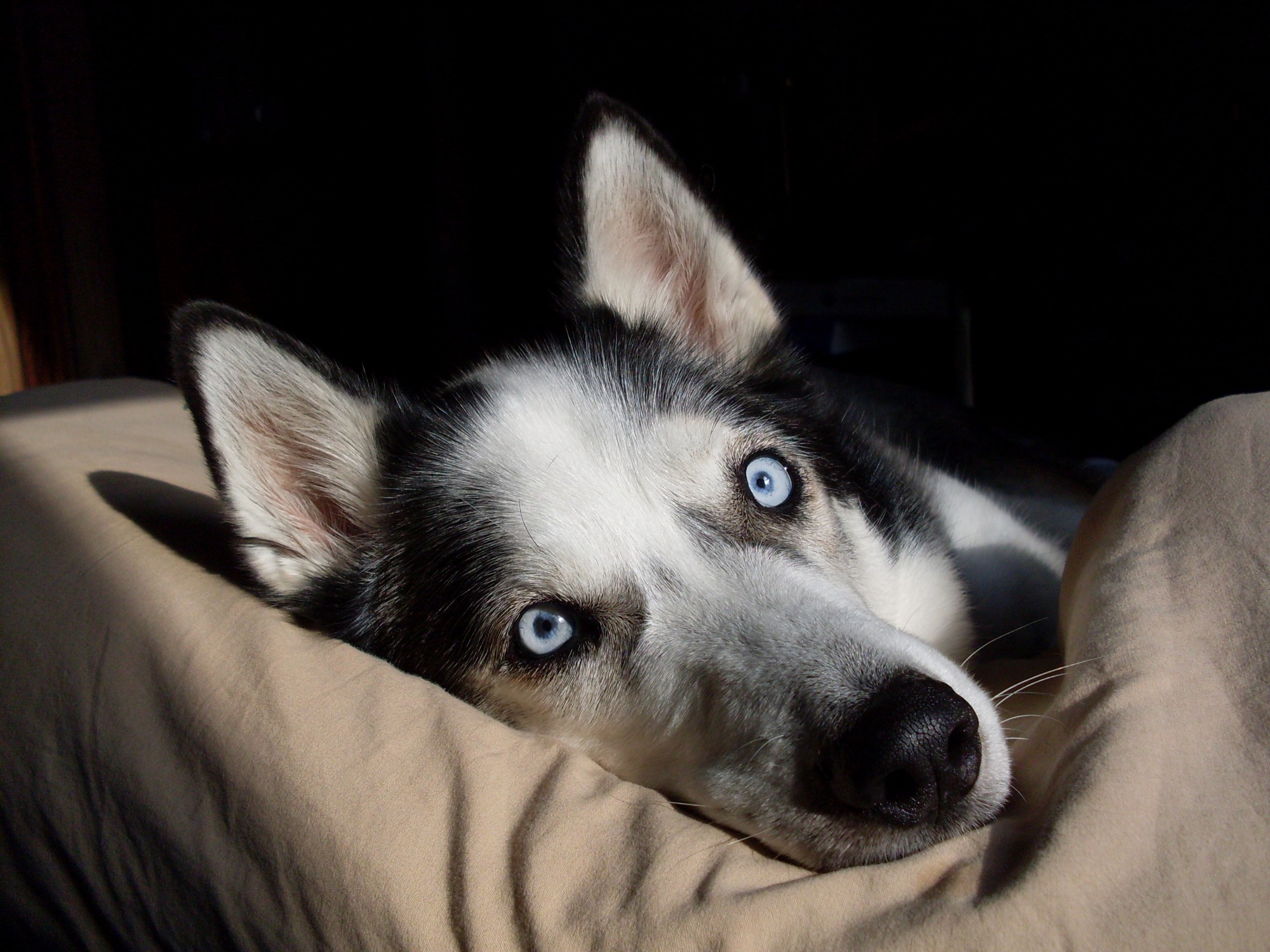Dr. Phil Zeltzman’s Blog
Owners’ smart choice saves Boston Terrier from difficult surgery
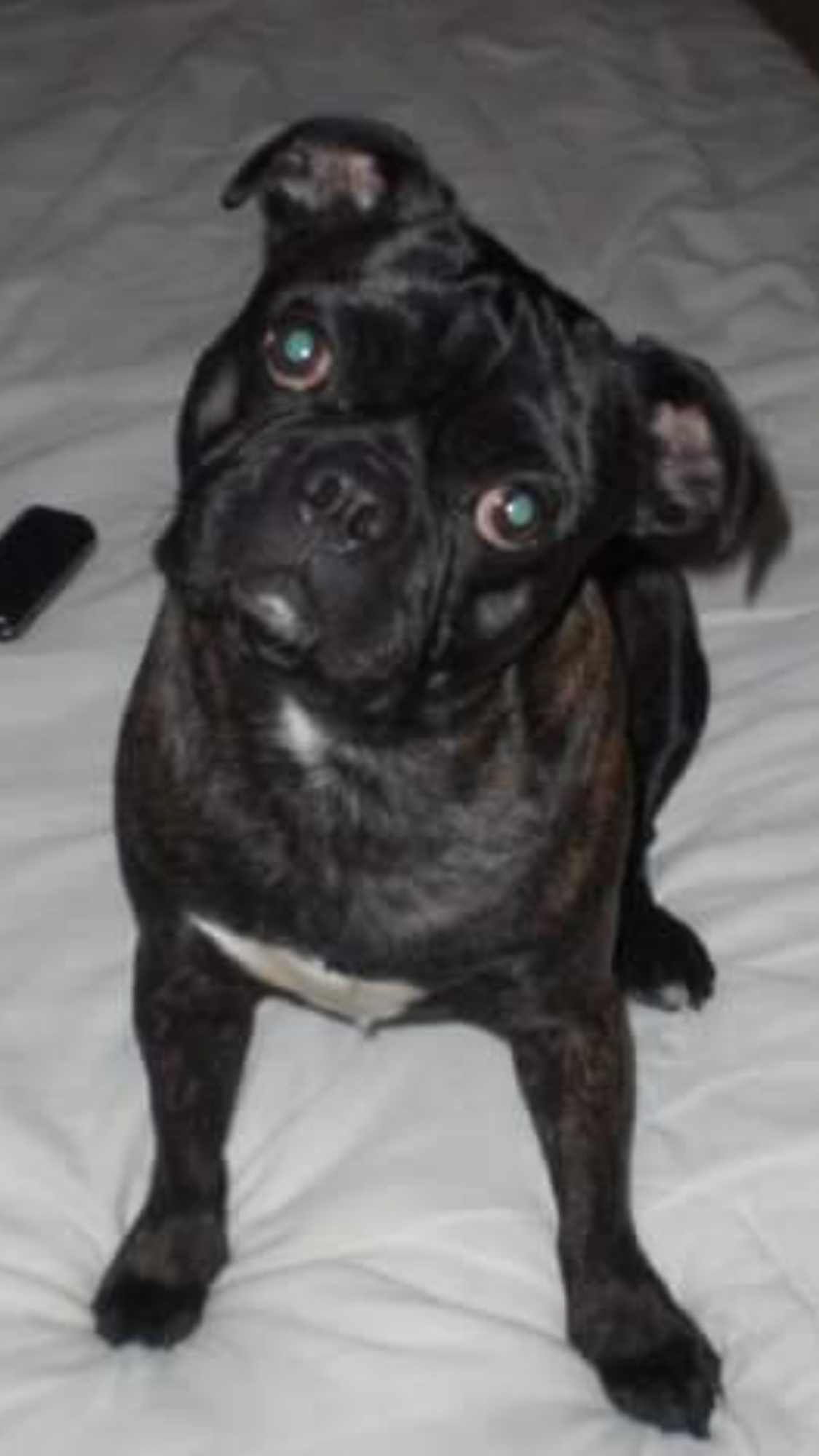 Bruiser is a nine-year-old Boston Terrier mix who was having some discomfort in his hind end. His owners took him to see his family vet. A rectal exam revealed a firm mass just below the anus, hidden under the skin. Surgery was recommended to remove and biopsy the mass.
Bruiser is a nine-year-old Boston Terrier mix who was having some discomfort in his hind end. His owners took him to see his family vet. A rectal exam revealed a firm mass just below the anus, hidden under the skin. Surgery was recommended to remove and biopsy the mass.
This surgery can be a bit tricky. The mass needs to be removed entirely, within healthy tissue to “get it all” or have clean margins. Yet we can’t be overly aggressive! We need to preserve the anus and more importantly, the muscles around it, which are responsible for continence.
Surgery at Brodheadsville Veterinary Clinic went very well. Bruiser had to wear a plastic cone around his head for three weeks. He went home with pain medications and antibiotics. The mass was sent out for biopsy.
The biopsy came back a week later…benign! It was a perianal gland adenoma, a common tumor in this area.
Bruiser is lucky his owners decided to remove the mass while it was fairly small. Removing a larger mass would be much more invasive. Early detection and a good decision from Bruiser’s owners made the surgery and recovery much smoother for Bruiser!
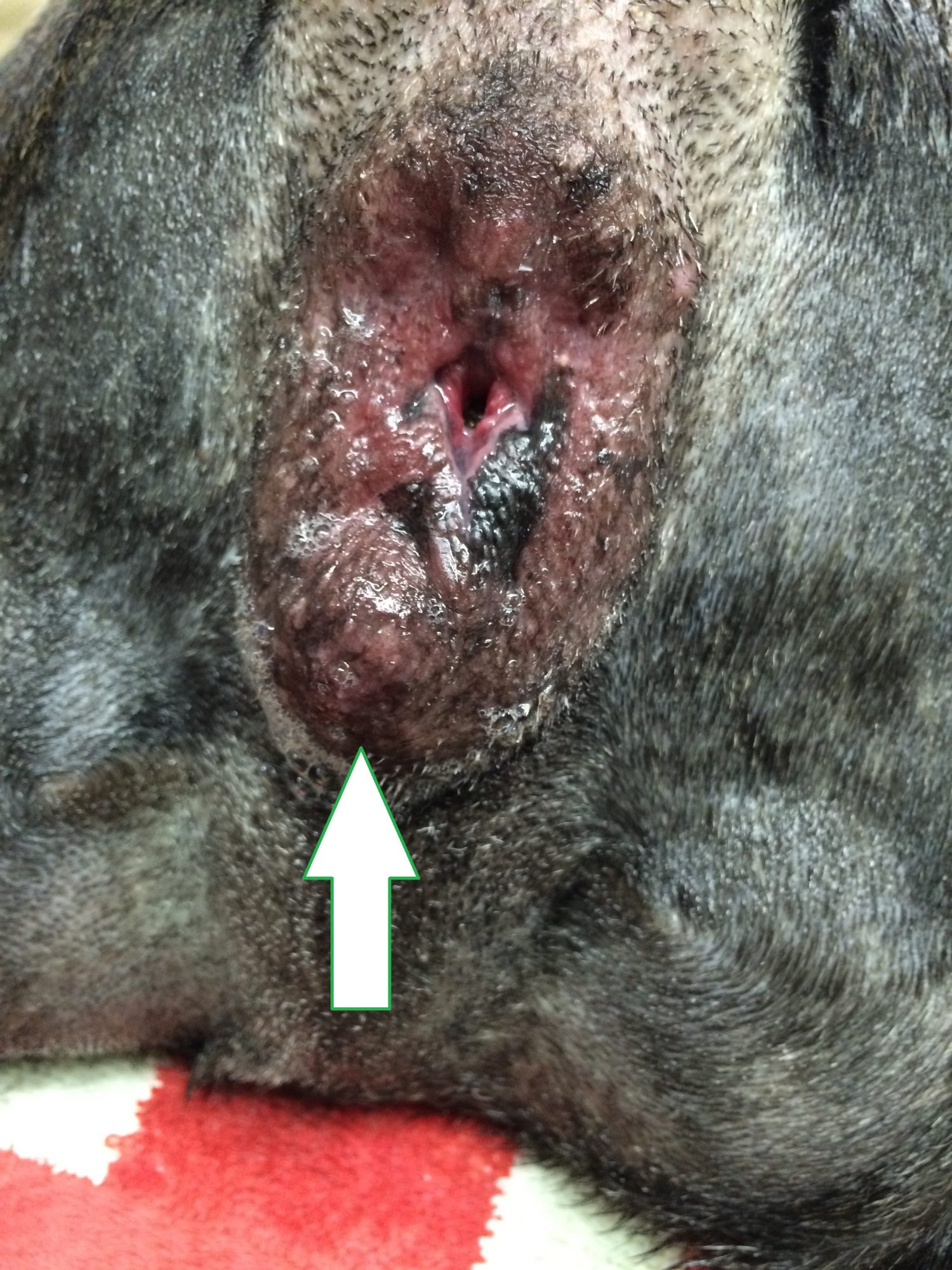
The arrow is pointing to a benign mass.

Dr. Phil Zeltzman is a traveling veterinary surgeon in Pennsylvania & New Jersey. An award-winning author, he loves to share his adventures in practice along with information about vet medicine and surgery that can really help your pets. Dr. Zeltzman specializes in orthopedic, neurologic, cancer, and soft tissue surgeries for dogs, cats, and small exotics. By working with local family vets, he offers the best surgical care, safest anesthesia, and utmost pain management to all his patients. Sign up to get an email when he updates his blog, and follow him on Facebook, too!
Jack Russell saved after he snacks on carpet
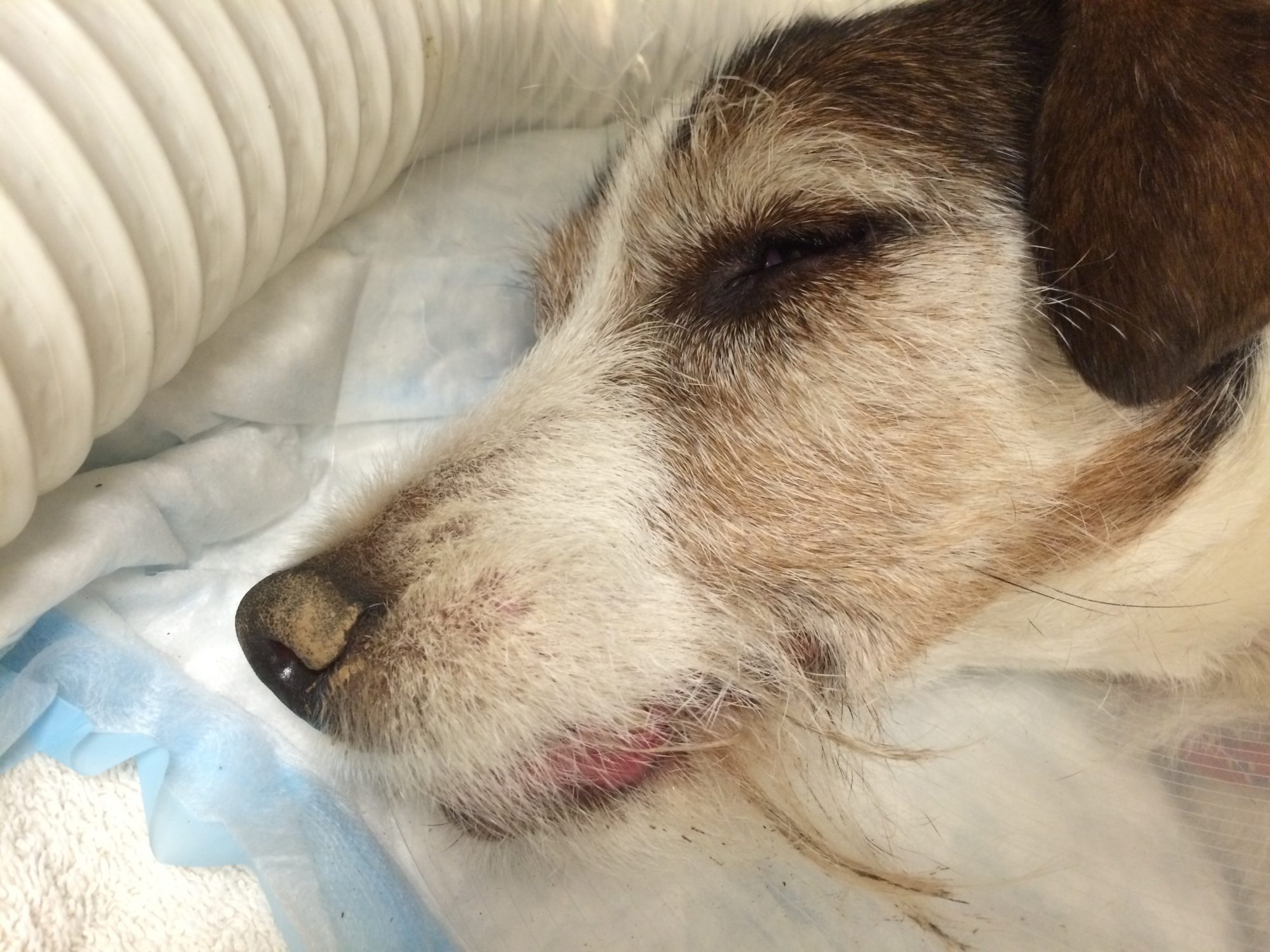 Sam is a 12-year-old Jack Russell, who had been vomiting and was lethargic for a few days. X-rays and an ultrasound revealed that he had swallowed a foreign body. There was a suspicion that he chewed pieces of carpet.
Sam is a 12-year-old Jack Russell, who had been vomiting and was lethargic for a few days. X-rays and an ultrasound revealed that he had swallowed a foreign body. There was a suspicion that he chewed pieces of carpet.
Carpet is really made of a very long string, so the risk was that Sam had eaten what is called a “linear” foreign body. Linear foreign bodies can be deadly if they cut into the intestine.
Sam was taken to surgery at Berks Animal Emergency & Referral Center. Two foreign bodies could be felt: one in the stomach and one in the small intestine. You can watch the removal of the string from the stomach and the intestine below. The video does contain graphic footage of a surgical procedure, so you may want to skip it if you’re sensitive to that type of footage!
Although we expect puppies (and kittens) to eat things they shouldn’t, older pets should know better. Most of the time, when an adult swallows a foreign body I suspect there is an underlying medical condition. I always take biopsies of the stomach and the intestine during surgery to check. Sure enough, Sam’s biopsies revealed a common condition called Inflammatory Bowel Disease (IBD). This disease can and should be treated to make him feel better and to hopefully prevent him from swallowing another foreign body.
Happily, Sam recovered nicely after surgery! Make sure to doggy proof your house to reduce the risk your pet will eat something dangerous. And if your dog or cat is vomiting, don’t wait! Take him to the vet to get it checked out.
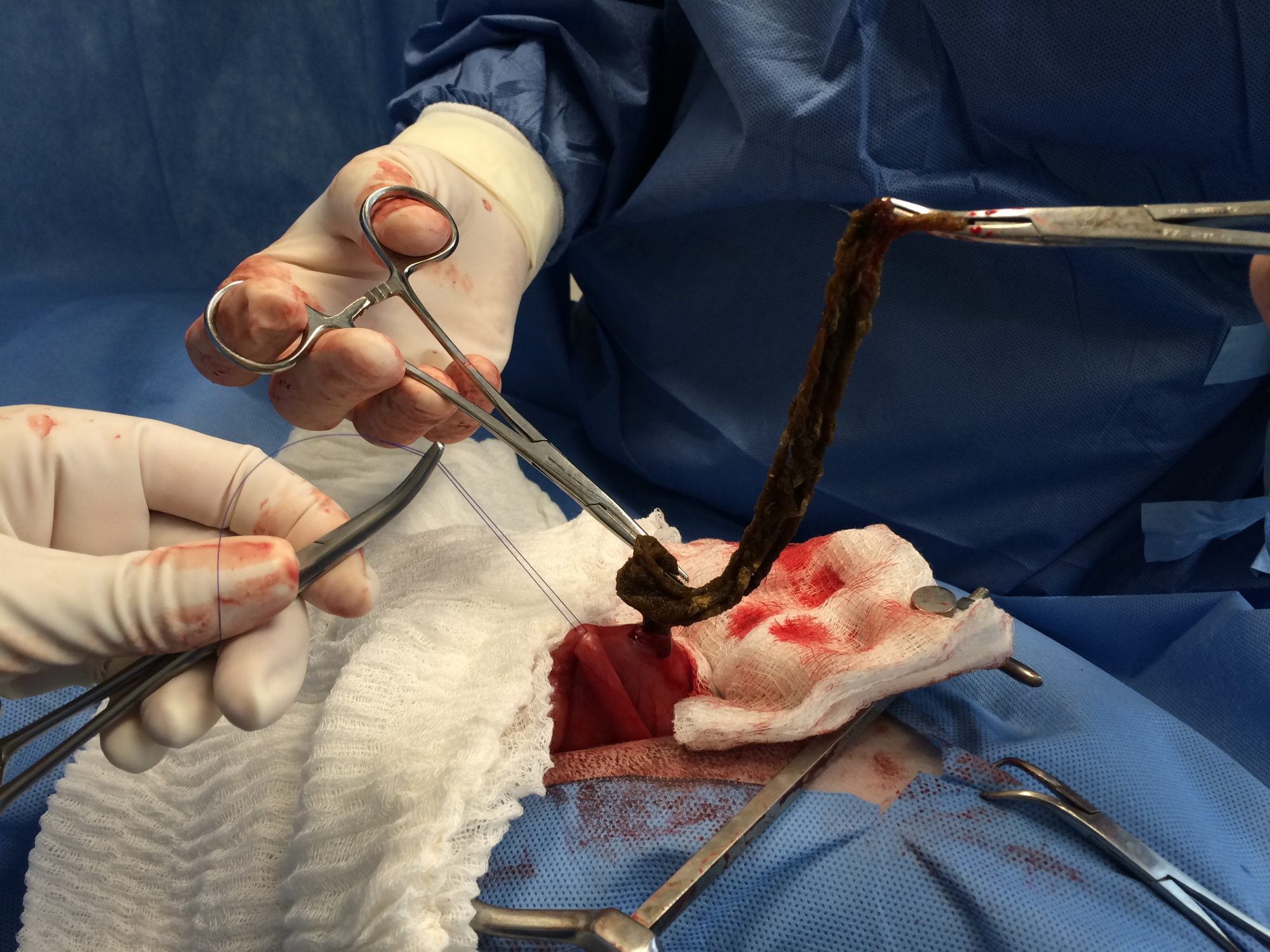 Removing the string from the stomach. |
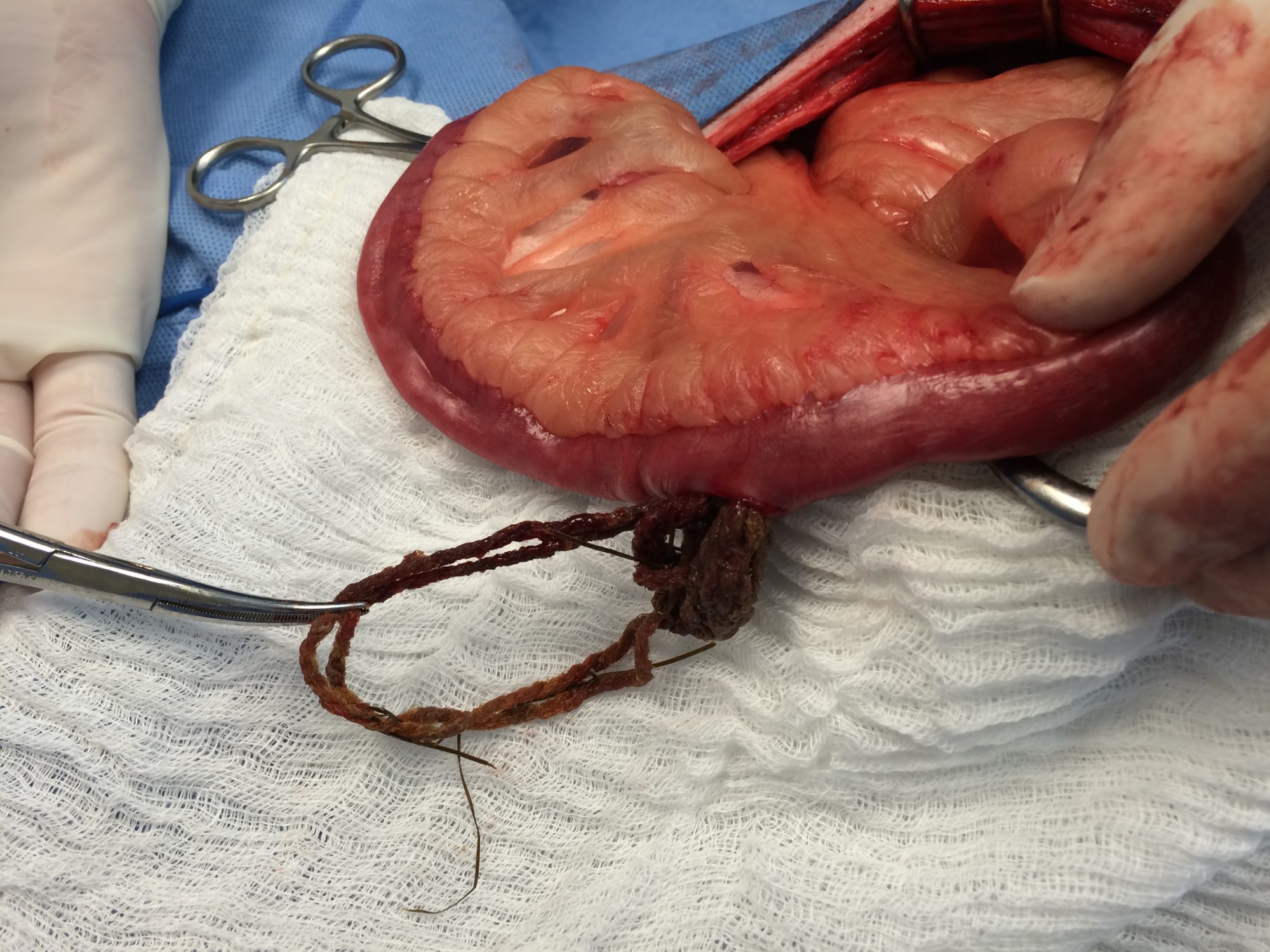 Removing the string from the intestine. |
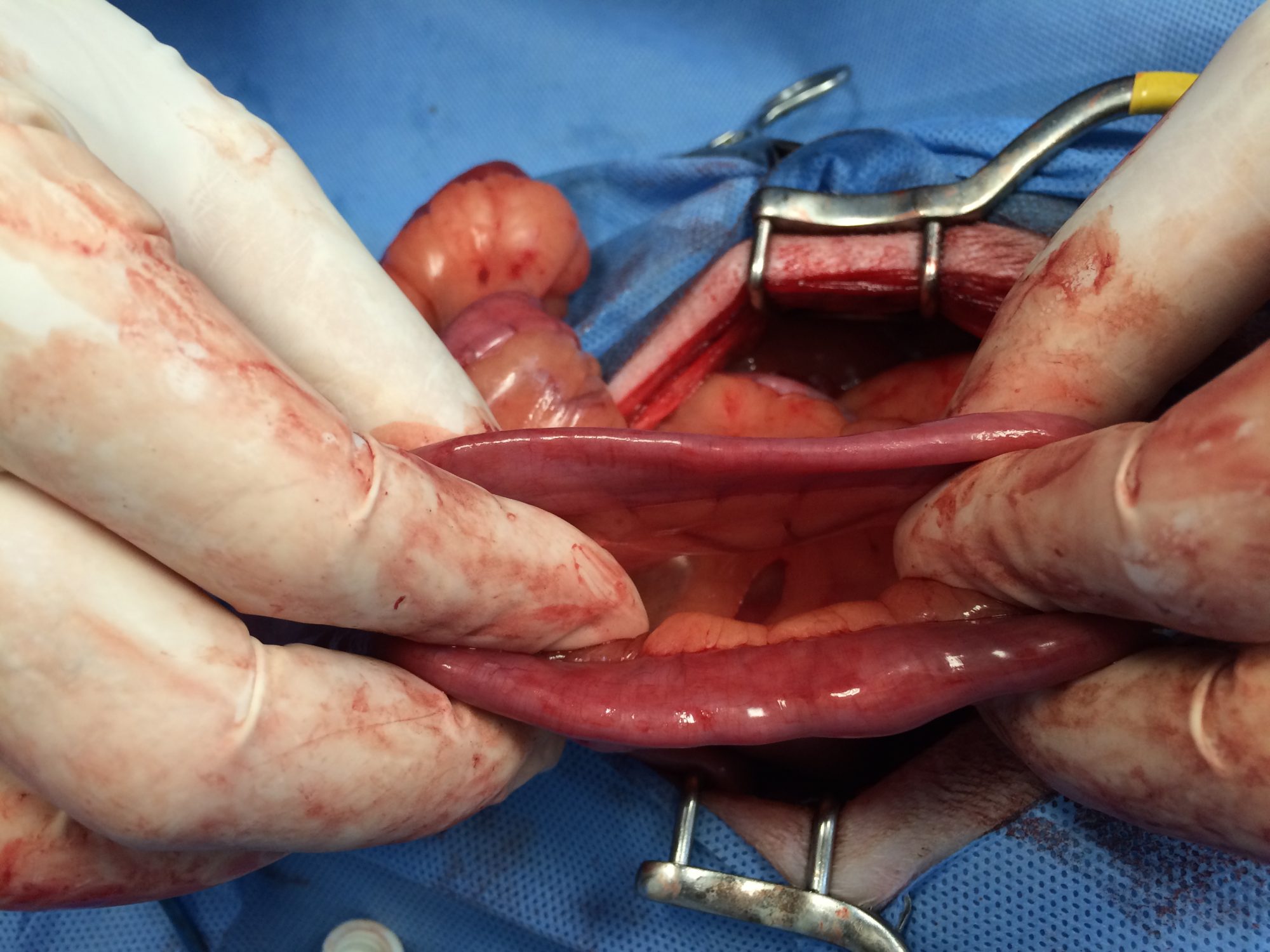 The thin loop is normal, but the thick loop has IBD. |
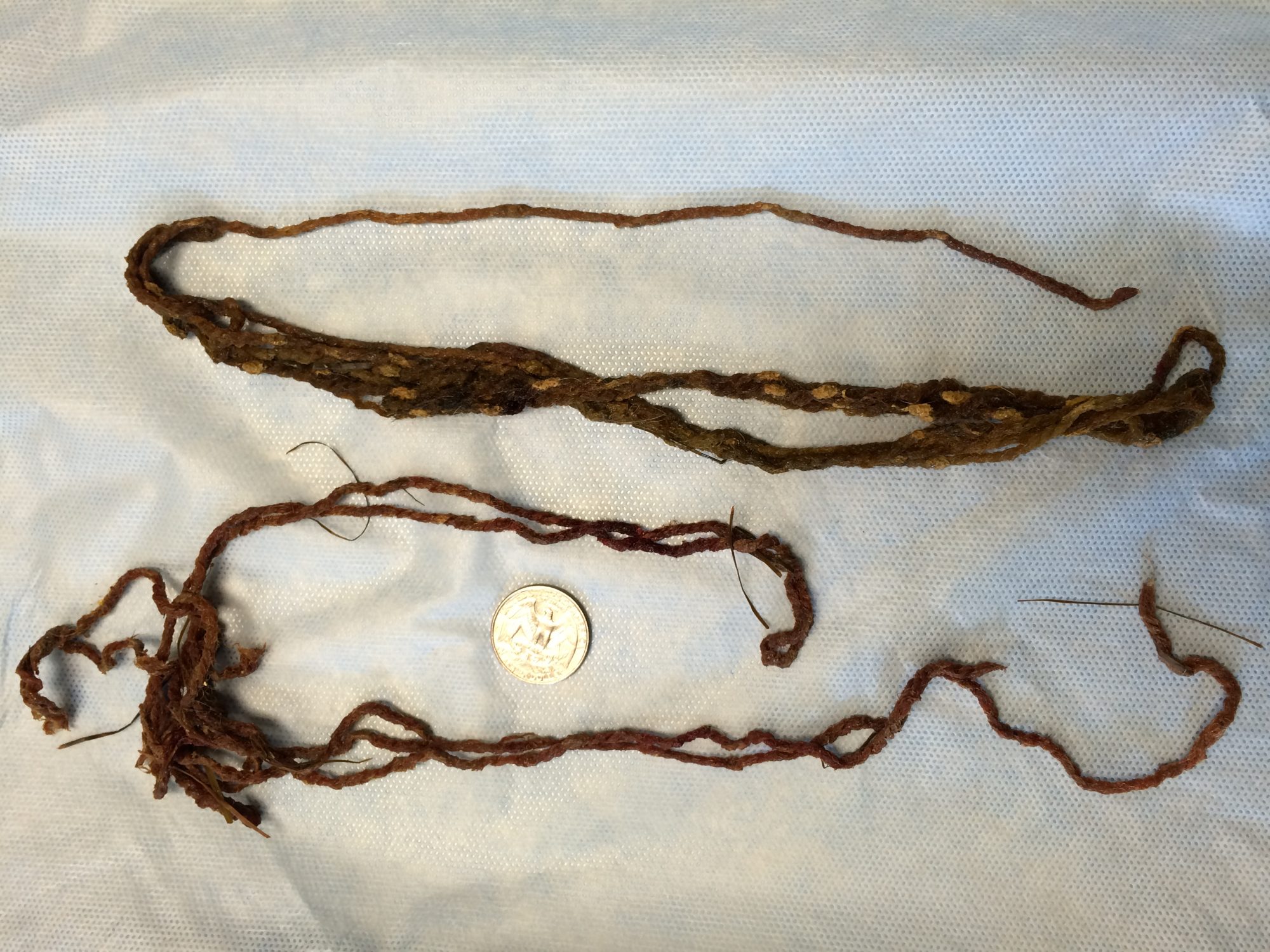 Here’s all the string Sam managed to eat. |

Dr. Phil Zeltzman is a traveling veterinary surgeon in Pennsylvania & New Jersey. An award-winning author, he loves to share his adventures in practice along with information about vet medicine and surgery that can really help your pets. Dr. Zeltzman specializes in orthopedic, neurologic, cancer, and soft tissue surgeries for dogs, cats, and small exotics. By working with local family vets, he offers the best surgical care, safest anesthesia, and utmost pain management to all his patients. Sign up to get an email when he updates his blog, and follow him on Facebook, too!
Leia: the Havanese that can’t be kept down
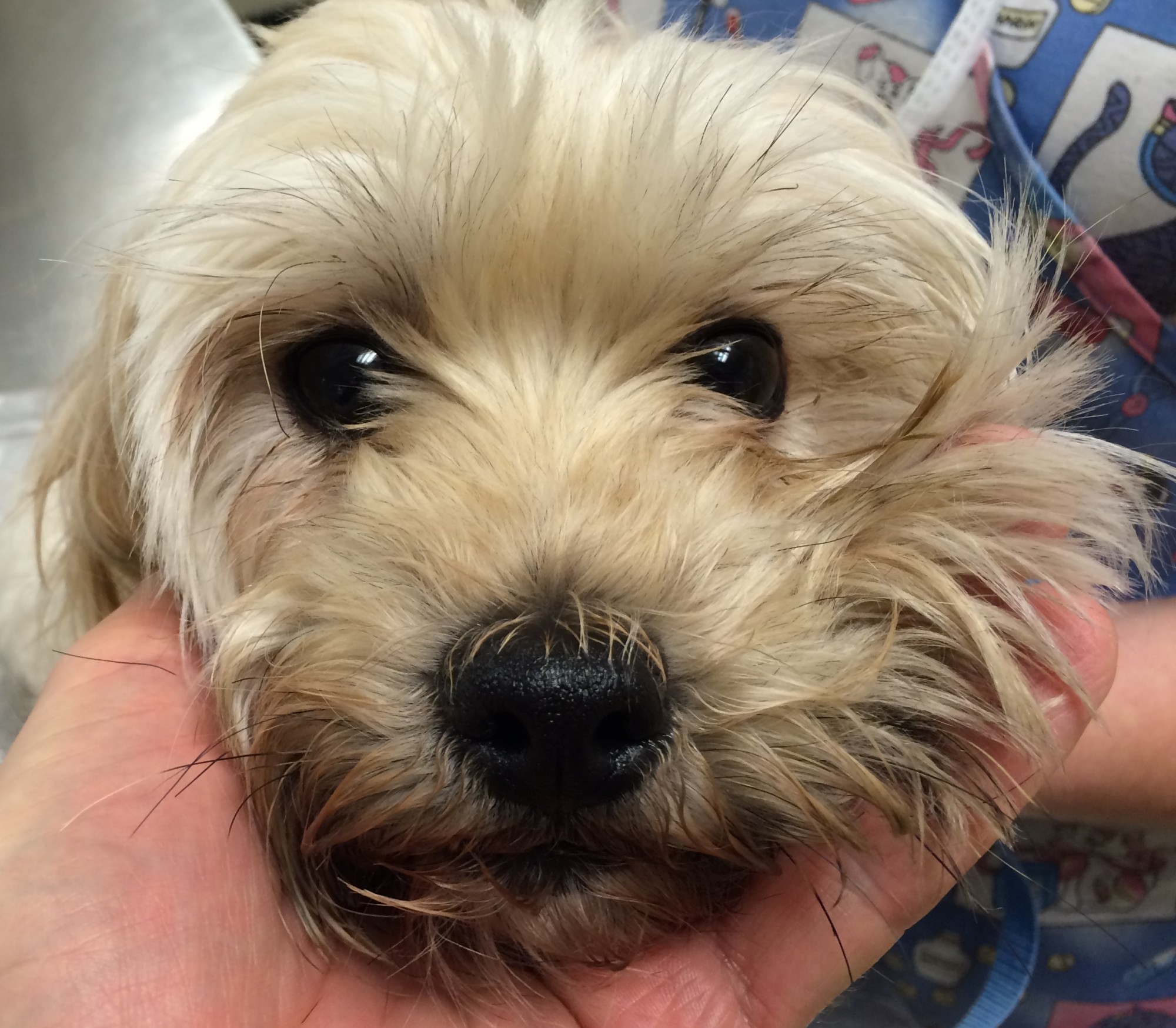 Leia is a 4 year-old female Havanese who just so happens to be cuter than a button.
Leia is a 4 year-old female Havanese who just so happens to be cuter than a button.
She was experiencing back pain and right hind leg weakness, in spite of pain medication and cortisone. An MRI showed a slipped disc in the middle of her back, between T13 and L1.
Leia had spinal surgery at Berks Animal and Emergency Referral Center to remove the slipped disc. This is a delicate surgery, that can paralyze a dog, if only temporarily.
Leia did great! Just a few hours after surgery, she went outside for a little walk. Nothing is going to stop Leia!
Back pain can be treated with pain medications and a slipped disc can be treated with cortisone, but studies show that in 80% of cases, these dogs actually need spinal surgery.
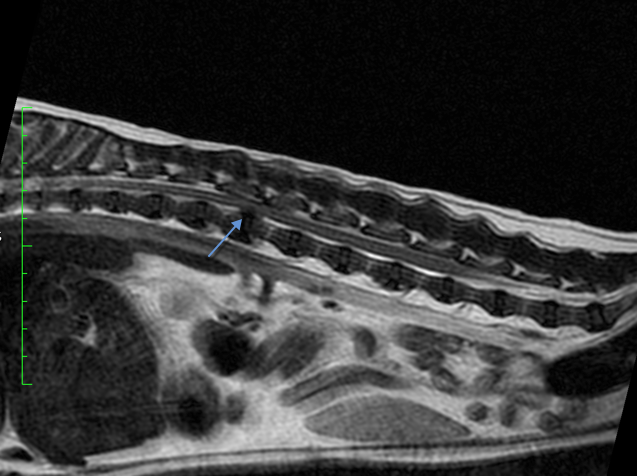
The arrow is pointing at the slipped disc.

Dr. Phil Zeltzman is a traveling veterinary surgeon in Pennsylvania & New Jersey. An award-winning author, he loves to share his adventures in practice along with information about vet medicine and surgery that can really help your pets. Dr. Zeltzman specializes in orthopedic, neurologic, cancer, and soft tissue surgeries for dogs, cats, and small exotics. By working with local family vets, he offers the best surgical care, safest anesthesia, and utmost pain management to all his patients. Sign up to get an email when he updates his blog, and follow him on Facebook, too!
Fix your dog’s laryngeal paralysis with tie back surgery
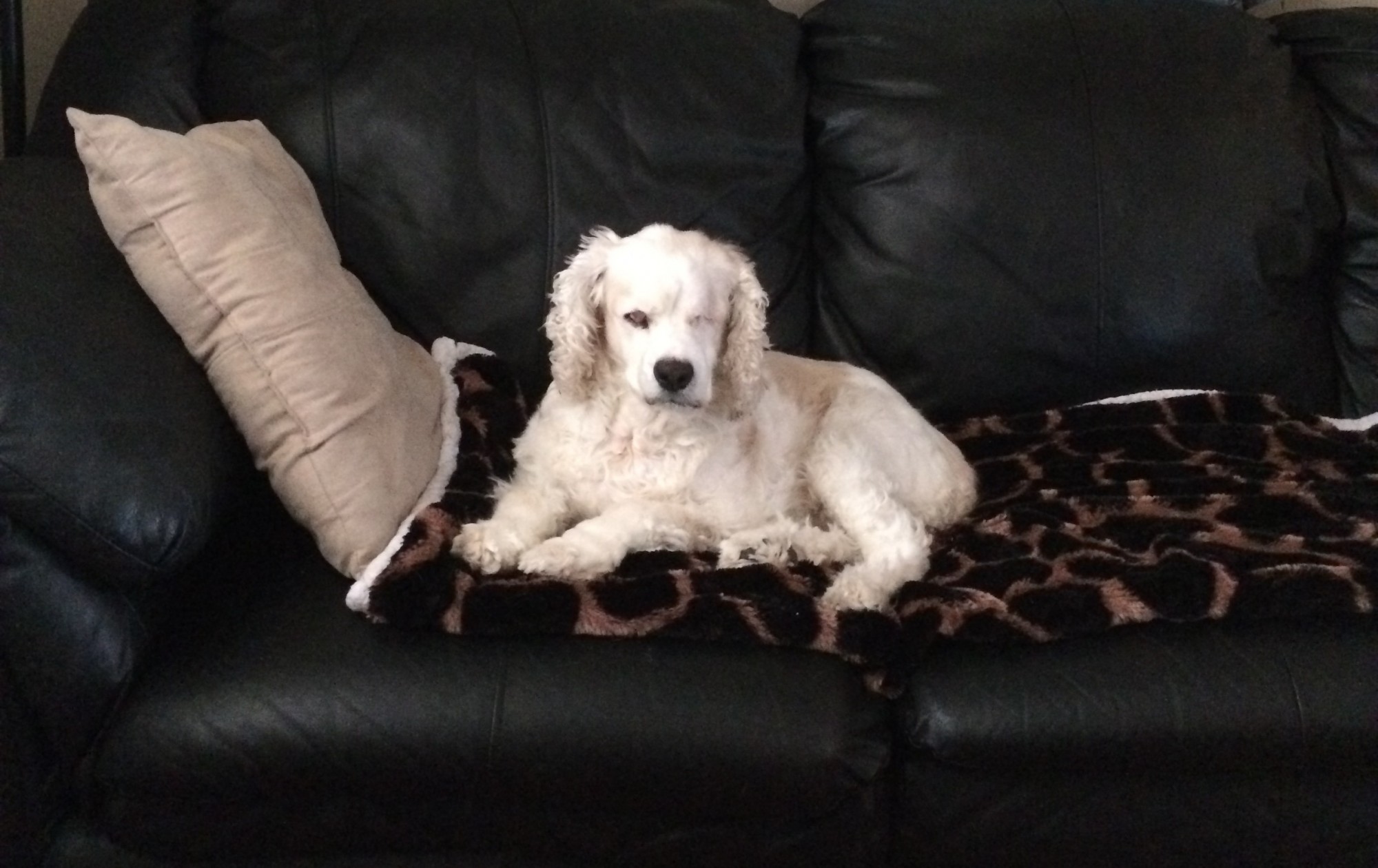 Matches is a 13 year old female Cocker Spaniel who, as you can see, rules the home from her royal couch.
Matches is a 13 year old female Cocker Spaniel who, as you can see, rules the home from her royal couch.
She previously had to have her left eye removed because of glaucoma, but she was referred to me because she had difficulty breathing. Her family vet diagnosed her with an unusual condition in a Cocker: laryngeal paralysis, or lar par.
This was very surprising. It’s a common condition in Labradors, but rare in other breeds such as Cockers.
Lar par is a stressful ailment where the two folds of the larynx (or voice box) do not open and close as the patient breathes in and out. The folds remain closed – paralyzed – and the patient literally suffocates. This can be fixed with “tie back” surgery, which involves placing 2 strands of heavy nylon to open the left side of the larynx.
It’s a delicate surgery, but typically successful as it opens the airway so that the patient can breathe. Matches recovered very nicely and quickly from surgery at Blairstown Animal Hospital in New Jersey. So far, she is doing great.
Below, you can see a preop and postop video of the larynx.
In the “before” section, don’t be fooled by the movement at the bottom of the folds! These are the vocal cords, which do nothing for breathing. Look at the top of the folds, and you will see that they do not move, even when she tries to breathe in.
In the “after” portion, the left side of the throat (which appears on the right side of the screen!) is open to allow air from going in.
It’s very important for veterinary professionals to never assume! I was surprised to hear from my colleague that he had a Cocker with laryngeal paralysis, but sure enough, that’s what she had.

Dr. Phil Zeltzman is a traveling veterinary surgeon in Pennsylvania & New Jersey. An award-winning author, he loves to share his adventures in practice along with information about vet medicine and surgery that can really help your pets. Dr. Zeltzman specializes in orthopedic, neurologic, cancer, and soft tissue surgeries for dogs, cats, and small exotics. By working with local family vets, he offers the best surgical care, safest anesthesia, and utmost pain management to all his patients. Sign up to get an email when he updates his blog, and follow him on Facebook, too!
Fatty spleen removed from blue-eyed beauty
Can you believe these beautiful eyes?
Storm is an 11 year old female Husky who went to her veterinarian because she wasn’t acting like herself. The referring veterinarian felt a mass in her belly during her physical exam.
We performed a spleen removal at Brunswick Veterinary Hospital.
Fortunately, the mass was benign (spleen myelolipoma). It was just a fatty tumor in the spleen! For comparison, the coin at the top of the picture is a quarter.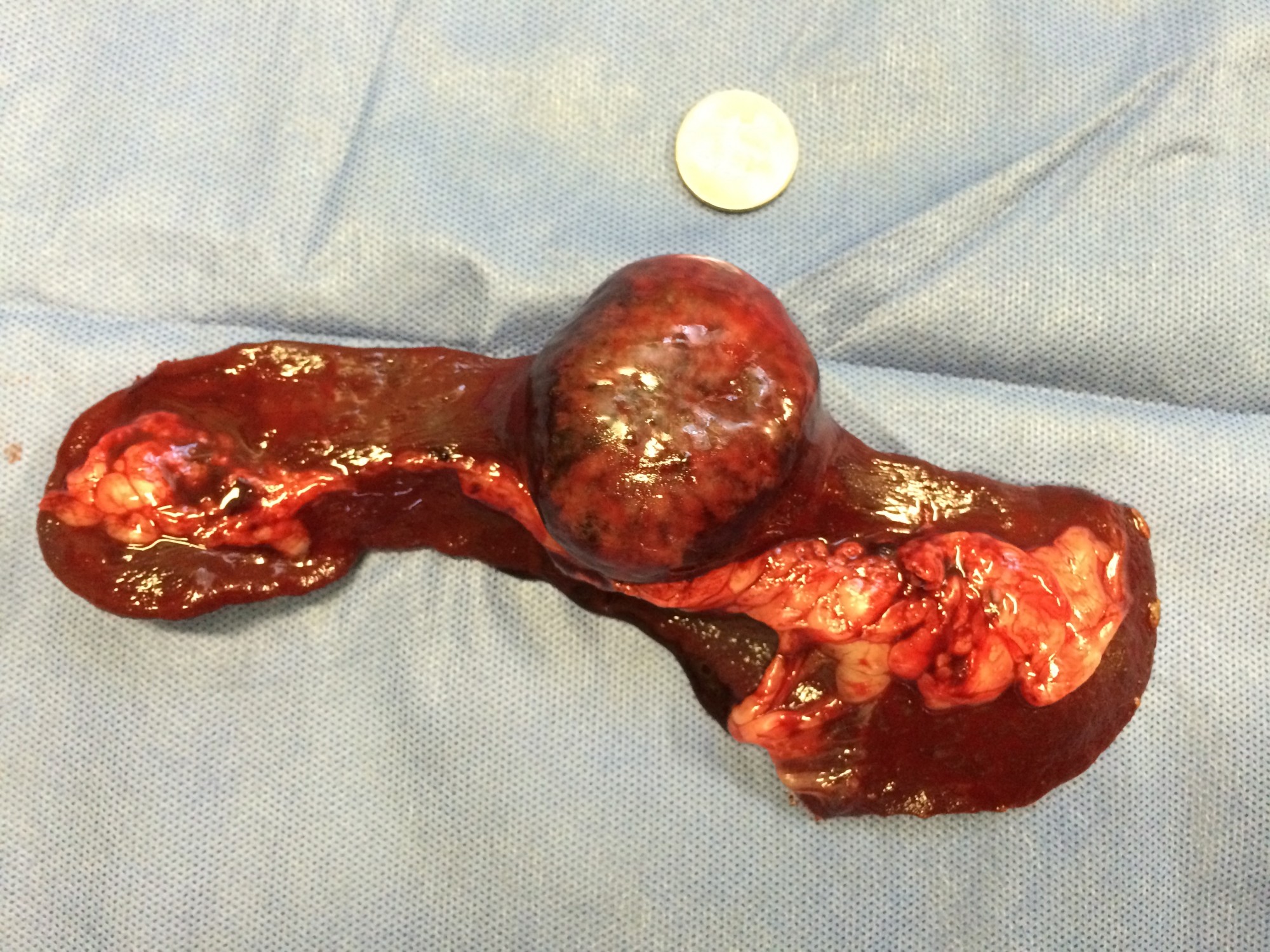

Dr. Phil Zeltzman is a traveling veterinary surgeon in Pennsylvania & New Jersey. An award-winning author, he loves to share his adventures in practice along with information about vet medicine and surgery that can really help your pets. Dr. Zeltzman specializes in orthopedic, neurologic, cancer, and soft tissue surgeries for dogs, cats, and small exotics. By working with local family vets, he offers the best surgical care, safest anesthesia, and utmost pain management to all his patients. Sign up to get an email when he updates his blog, and follow him on Facebook, too!


